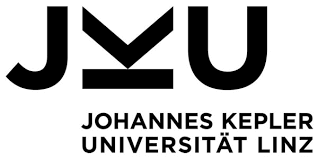The steady growth of livestock farms and the conversion to loose housing are factors that are increasingly demanding an automated animal management system. For larger herds, it is important to be able to locate animals quickly, but also the monitoring of animal health and animal behaviour plays an important role. With the help of wireless ear tags the company Smartbow GmbH generates data for further statistical processing. Through the connection of position and acceleration data, patterns can be reliably found and resulting decisions can be made much faster, this in turn increases the efficiency of the farm.
Introduction
Livestock farms are increasingly challenged to remain competitive. The desired increase in performance, however, can also lead to an increased number of sick animals. Therefore, a system that quickly detects changes in the behavioural patterns of animals is extremely important. For example, lame animals or animals with a different feeding behaviour can be recognized very fast. For animals in heat, an insemination can be performed at the optimal point of time. Another benefit of the system is the ability to forecast an upcoming birth of a young animal. Since the activity of the dam increases already hours before the birth process, the farmer can be informed about the approaching birth in time.
The main focus of this report has been placed on the feeding of breeding calves.

Fig. 1: ear tag (© Smartbow GmbH)
Example – Feeding of breeding calves
The SMARTBOW system can also simplify other process flows due to the variety of existing information. For example, automatic feeding stations can be equipped with a lower number of technical components as previously, and therefore, production costs will decrease. The currently available systems on the market use RFID chips for animal identification and determine the amount of feed intake by volumetric measurements in the mixer bowl or by time dosing. During this project an alternative method has been developed, that recognizes purely from the acceleration data of the ear tag when a drinking phase takes place and how much milk is consumed. For this project, feeders of the company Urban GmbH & Co KG have been used.
Since animals have a special periodically swallow behaviour during a drinking period, which is also transmitted to the ear tag, the occurrence of a drinking process can be detected. In addition, the pattern of movement changes from “Going” to “Standing”. This can be determined by a statistical analysis of the variation of the acceleration data measured by the ear tag.
Once a drinking start has been found, an estimation of the volume of feed intake can be generated by using a linear regression model. An advantage of this method is that after the consumption of a particular ration the milk flow can be interrupted. Thus, an animal individual feeding plan can be realised easily.
By observing the time between two visits of the feeding station as well as the consumed amount and velocity of feed intake, abnormalities in the drinking behaviour can be detected. If calves receive too little milk, their growth is limited, they are often ill or they make no further developments. Too high milk consumption, in contrast, leads to diarrhoea, as a too large quantity of milk cannot be digested fast enough. Thus, the animal is weakened and its growth is slowed down. Acute diarrhoea can lead to death within a few hours. In addition, more milk would be consumed than necessary.
A significant cost saving result further comes from the fact that now more milk stations can be supplied with one trough.
As diseases can now be detected faster, expensive medications can be avoided. For breeding farms, it will be important to focus on an improved animal health in future. By the developments in this project, an important contribution to this development is made.

Fig. 2: calf near the feeding station (© Urban GmbH & Co KG)
Impact and effects
Within this project, mathematical methods have been developed that make statements about the animal behaviour and the animal health. The resulting measures can thus be initiated quickly, this in turn increases the profitability of the farm.
Contact and information
K2-Center, ACCM
Linz Center of Mechatronics GmbH Project coordinator
Altenberger Straße 69, A-4040 Linz Dr. Thomas Buchegger
T +43 (0) 732 2468-6002
E office@lcm.at, www.lcm.at
Project partners
| Organisation | Country |
| Smartbow GmbH | Austria |









